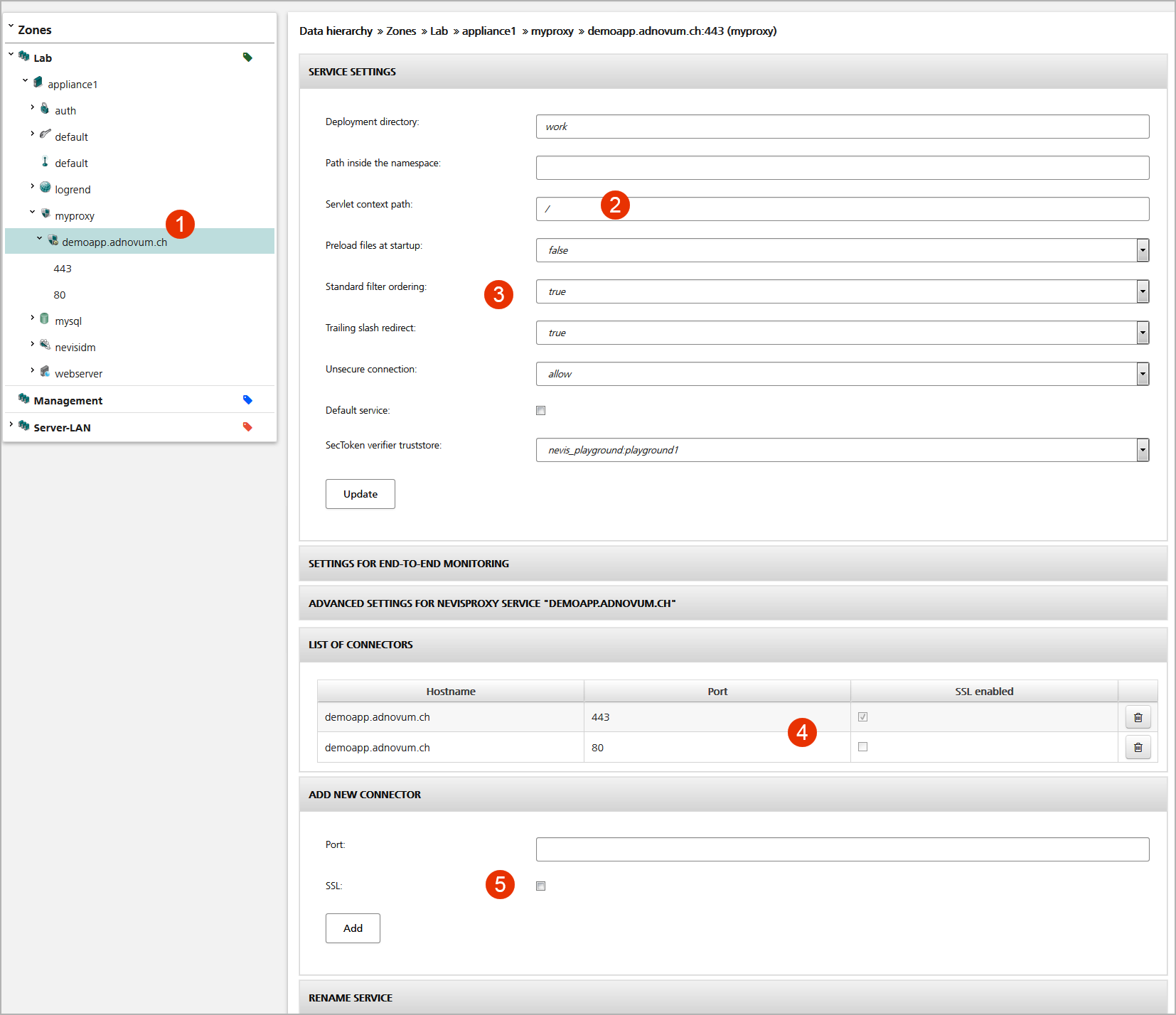Service
A service connects to a network interface by using the host names and ports of the configured connectors.
The nevisProxy service uses the full qualified host name by which it should be accessible from the Internet or intranet, e.g., www.nevis.ch.
infoThe nevisProxy instance is going to listen on the Ethernet interface defined by the service name by default. If the service name has not been configured as an Ethernet interface on the server hosting the nevisProxy instance (e.g., it's a virtual IP [VIP] which is dandled by a load balancer or firewall and forwarded to the server's IP address [source NAT]), you can specify an alternative host name to listen to within the connector view of the nevisProxy service.
The nevisAuth service uses the full qualified host name of the server. This name matches the Hostname which has been configured for the server that hosts this nevisAuth instance. This is necessary, because nevisProxy communicates to nevisAuth using 2-way SSL, and nevisAuth normally uses the certificate configured for the server that hosts the nevisAuth instance. See also the keystore settings shown in the figure Sample server view.
The name of a nevisLogRend service is usually localhost (if it is located on the same server as the nevisProxy instance).
All other service types use the host name under which they are available within the network. This is often the host name of the server on which they are installed. You may have multiple services having the same host name on the same server but they must use different ports to avoid conflicts when binding to the network interfaces.
Some services may use multiple connectors to serve different ports. Connector configuration includes SSL and HTTP keep-alive settings for example.
The [figure] below shows the Service view for the sample nevisProxy service "demoapp.adnovum.ch".
- The navigation pane at the left shows which service of which server instance you are looking at (the service with the colored background; see no.1 in the figure below).
- The Servlet context path field in the Service view on the right defines the start URL to which users are redirected when calling an unknown URL (no.2 in the figure).
- The Service view also shows other configuration settings of the selected service (no.3).
- Find the connectors of the server (ports on which the service is listening to) in the List of Connectors panel (no.4).
- To add a new connector to the service, enter an appropriate port number in the Port field. Then choose whether you want to use SSL (no.5 in the figure). Click Add.
